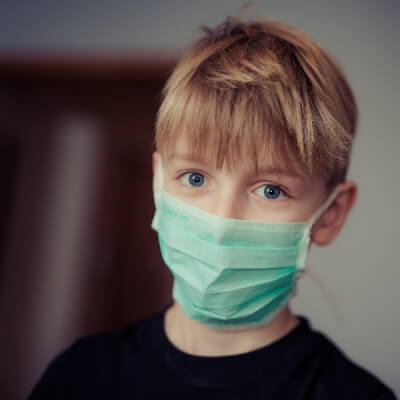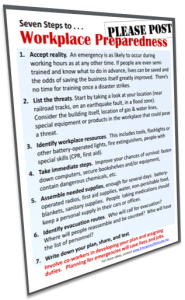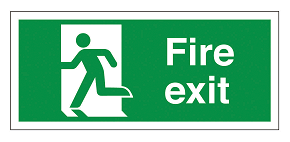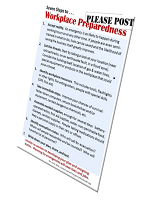Dust Mask for Your Survival Kit

Update as of 9-2020. Because of COVID-19, supplies of commercial masks may be limited. Take steps NOW to get the masks you need.
Do I need a dust mask for my survival kit?
As the pandemic continues, and fires explode in California, we are taking yet another look at the role masks play in protecting our health.
This week, a question first asked over a year ago was raised again.
What’s the best dust mask to protect me from smoke from a wildfire?
In my neighboring county here in southern California the overall Air Quality Index today registers more than 5 times the “safe” levels as set by the EPA!
Air quality considers gases and particles. Particles are the first thing a dust mask attempts to stop. Masks are labeled according to how much particle protection they offer. For example, a mask will get a measurement like “90” or “95” or even “100.” This tells you the percentage of particles this mask can block from entering your lungs.
Particles are also measured by size. Some masks protect against particles down to 10 microns in size. Others protect against particles down to 2.5 microns. The smaller, the better.
Let’s look more closely at some of the options from the standpoint of preparedness.
1-Option One – standard disposable paper or cloth dust mask
(FYI, the child in the image at the top of this Advisory is wearing a standard surgical style disposable paper mask.)
As we wrote just a couple of weeks ago, your Go-Bag should include a supply of surgical style paper masks as protection against the spread of COVID-19 in a evacuation or shelter situation. Thin paper masks are meant to stop YOU from transmitting virus via droplets from your breath.
They can also protect you from breathing in larger particle pollutants that may be in smoke.
These masks typically have thin elastic straps that go around the ears or around the head. You can see that the one in the image has only one strap. This means it probably won’t fit too well — particularly if you have a beard or mustache.
These masks are for one-time use only.
Inexpensive cloth masks – or just a bandana — can be washed and reused but tend to get wet around the mouth. These masks may give you the impression of providing security. They may stop you from passing on the virus. But they can really only prevent some of the very largest smoke particles from getting into your lungs.
2-Option Two – “respirator” built for better protection
It appears that the best all-purpose masks are those labeled N95. They filter out 95% of pollutants that aren’t oil-based. (Some masks are labeled N99 or even N100 and are more effective.) These are the masks that health care workers, first responders and volunteers working in the burn areas of California wear – or should be wearing.
Like the Option One masks discussed above, these masks are also disposable. But they fit better (two straps, nose piece) and are more comfortable and thus can be worn longer before being replaced. One additional comfort feature is an exhalation valve. The valve makes it easier to wear the mask in hot or humid conditions.
Here’s an example from Amazon (where we are Associates) of an N95 mask with exhalation valve. This model comes 10 to a box.

Caution: While a mask with an exhalation valve may make it easier for you to work in smoky conditions,, it does not protect you from harmful gases. Moreover, the CDC warns that because an exhalation valve makes it easier to breathe out, the mask will not keep you from transmitting a virus to others.
Masks can also be combined with additional layers or filters to keep out specific pollutants. The more layers, the more effective (as long as the fit is good). The mask below, for example, is designed with extra layers of activated charcoal. (Note adjustable ear straps.) My research does suggest that while these masks with filters can protect against particles as small as 2.5 microns, they are NOT rated by the National Institute of Occupational Safety and Health (NIOSH), the one that gives us the “N95” rating.

3-Option Three – masks for specialty use
If you find yourself in a specialty situation — for example, where you are engaged in grinding or welding, or working in heavy pollution caused by a fire – you need a reusable respirator. Typically, it will have one or dual cartridge holders permanently affixed to a half-face or full-face mask. You add filters or cartridges to the holders to match the job you’re performing. If you’re looking for the highest level of protection, go for P100. It filters out 100 percent of both oil-based and non-oil-based particles.

You can probably find specialty, reusable masks like the one above starting as low as $25. (Prices quickly go up to well over $100). Be sure you’re getting the filters and/or cartridges you need. In particular, be sure the mask fits WELL. Any air leakage defeats the purpose entirely. Straps that are too tight will keep you from wearing the mask when you need to.
If you prefer a half-face mask, you may want to add goggles or some sort of eye protection.
For everyday survival kits, a full face respirator is probably more than you need. But if you know you are heading into a dangerous air situation, and can grab some extras from your stash of supplies, having a reusable mask with the appropriate cartridges would certainly be useful.
Some final thoughts about a dust mask for your survival kit.
Putting on a mask seems simple, but wearing one for hours can be difficult for some people. The masks become hot and scratchy, and if they get wet they may become soggy and block air altogether. People with facial hair and small children can’t get the fit that’s necessary for the best protection.
But in an emergency, it makes no sense to be without sensible simple protection.
I recommend you buy a box of surgical masks and another of N95 masks and put some in each survival kit you own — family members, the car, and the office. Practice putting on one of the masks to check its fit.
Now, take that mask off and tuck it back in the bag with the others and know protection is there when you need it.
Virginia
Your Emergency Plan Guide team
Have you had experience with face masks? Tell us your story!



 OK, so you’re in good shape when it comes to preparedness.
OK, so you’re in good shape when it comes to preparedness. Last week we attended a business expo: 1,000+ people talking, laughing, and sharing their business ideas. Energy and American ingenuity on display!
Last week we attended a business expo: 1,000+ people talking, laughing, and sharing their business ideas. Energy and American ingenuity on display!
 The US Department of Labor has a division called Occupational Safety and Health Administration, otherwise known as OSHA. I’m sure you’ve heard of it!
The US Department of Labor has a division called Occupational Safety and Health Administration, otherwise known as OSHA. I’m sure you’ve heard of it!